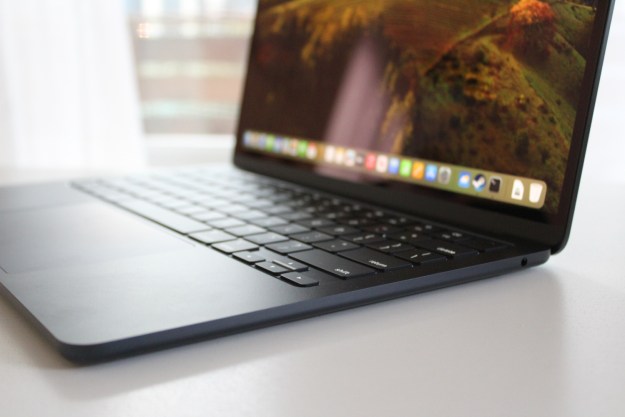The MacBook Pro 16 was a huge comeback for Apple’s high-end laptops. It may not be revolutionary, but the design has been brought up to date, performance has been vastly improved, and the keyboard is quite possibly the best Apple has ever made. The whole device has been tuned up and upgraded in almost every way.
Which is why it may sound strange to hear me say that you shouldn’t buy it. Well, let me rephrase that — most people shouldn’t buy it. While it’s head and shoulders above Apple’s recent efforts, it’s still out of reach for most people.
A great time to upgrade?

Don’t get me wrong, I’m not bashing the MacBook Pro 16. It’s the first MacBook in years that has made me excited, and I’d love to upgrade my 2015 MacBook Pro for this shiny new delight.
Instead of every positive being met by an equal and opposite drawback, there’s remarkably little putting me off the new MacBook Pro.
It’s a machine designed to make pros happy. If you use heavy duty video-rendering or photo-editing apps, the redesigned thermal system and new AMD Navi graphics cards in the MacBook Pro 16 will make a noticeable difference to your work.
But there’s a problem. Most people don’t use heavy duty video-rendering or photo-editing apps. If you just want a MacBook with a comfortable, reliable keyboard and modern, slimmed-down bezels, the MacBook Pro 16 is your only choice.
The other options, such as the 13-inch MacBook Pro and the MacBook Air, don’t include these sought-after features. With more than a thousand bucks separating these from the 16-inch MacBook Pro, you’ll be left wondering how much that keyboard is really worth.

In deciding which device to put decidedly non-pro features (like a decent keyboard) in, Apple faced something of a Catch 22 situation. Limit these features to a high-end Mac and it’d be accused of pricing out average consumers. Make them available in its more affordable models and it’d be censured for not doing enough to make pro users feel special. In the end, it decided the $2,000+ MacBook Pro 16 would be where these features would make their debut.
Yet there’s reason to believe Apple’s latest MacBook is just the first of several that will receive the new keyboard, slimmer bezels, and more. If you’re in the market for exactly these things, you shouldn’t buy the MacBook Pro 16. Let me explain.
Good things come to those who wait
A few months ago, when rumors of the MacBook Pro 16 were rife, we were expecting it to be a total overhaul and Apple’s attempt to go “all out” on the device. Instead, the MacBook Pro 16 is more of a hotfix of sorts; it’s not a paradigm shift in the way the iPhone X was.
That’s encouraging for those who want to see some of its features make their way across to other MacBooks. Apple hasn’t siphoned off the MacBook Pro 16 as some sort of ultra-high-end device (contrary to some of the rumors before it launched), there’s nothing preventing its features spreading to the rest of its laptop lineup.
That’s not just wishful thinking on my part, either.

Back in late October 2019, prominent Apple analyst Ming-Chi Kuo released a report stating that a scissor-switch-enabled MacBook would be released in mid-2020. At the time, many of us thought this might be the MacBook Pro 16. But now that the MacBook Pro 16 has actually launched, that report has taken on a new aspect. It now looks like Kuo may have been referring to a totally different device — and that the new Magic Keyboard will therefore spread to other devices.
Nothing is for sure though. In an interview with CNET, Apple’s marketing chief Phil Schiller was asked whether the new scissor-switch keyboard would make it into other MacBooks, or whether they would continue with the butterfly design. His response? “We are continuing both keyboard designs.”
Of course, this may just be a sensible marketing response to avoid throwing the butterfly keyboard under the bus. As Schiller said in the interview, some people really like its stability. But given the remarkably positive response to the MacBook Pro 16’s keyboard, I’d be shocked if it was limited to this model only.
If you want these features in a more affordable MacBook, your best bet is to wait and be patient.
But even if we take Phil Schiller’s statement at face value and the Magic Keyboard is more of a limited affair, there are plenty of other aspects of the MacBook Pro 16 that will likely be doled out to the other MacBooks like the good kids at Christmas. From the slimmer bezels and incredible speakers to the larger battery and all-new cooling system, Apple would be crazy to restrict these elements to one device.
That means if you want some of these features in a more affordable MacBook, your best bet is to wait and be patient. Apple has a strong record of spreading features from its flagship products to the others in its catalog, from the Retina display to USB-C ports.
And if you’re at the other end of the spectrum, there are still reasons to wait. Apple is known to be working on a mini-LED display for the MacBook Pro, which will seriously improve the visual experience, while it also has its own ARM processors up its sleeve. We may see the fruits of these labors as early as 2020.
So for now, save your money. There’s no need to shell out $2,399 (or more) if you want to grab some of the Magic Keyboard action. A few months down the line you’ll be able to get your hands on it for a fraction of the cost.
Editors' Recommendations
- These 6 tweaks take MacBooks from great to nearly perfect
- If you buy one MacBook Air alternative, make it this one
- The case for buying the M2 MacBook Air over the M3 model
- Which color MacBook should you buy? Here’s how to pick
- Why you should buy a MacBook Air instead of a MacBook Pro




